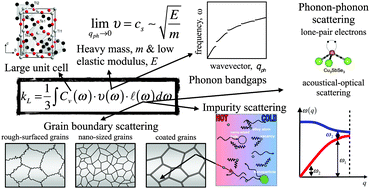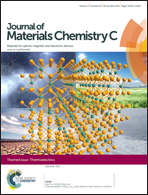Strategies for engineering phonon transport in thermoelectrics
Abstract
In this review, we discuss some of the representative strategies of phonon engineering by categorizing them into the methods affecting each component of phonon thermal conductivity, i.e., specific heat, phonon group velocity, and mean free path. In terms of specific heat, a large unit cell is beneficial in that it can minimize the fraction of thermal energy that can be transported since most of the energy is stored in the optical branches. In an artificial structure such as the superlattice, phonon bandgaps can be created through constructive interference by Bragg reflection, which reduces phonon group velocity. We further categorize the mean free path, i.e., scattering processes, into grain boundary scattering, impurity scattering, and phonon–phonon scattering. Rough-surfaced grains, nano-sized grains, and coated grains are discussed for enhancement of the grain boundary scattering. Alloy atoms, vacancies, nanoparticles, and nano-sized holes are treated as impurities, which limit the phonon mean free path. Lone pair electrons and acoustical-to-optical scattering are suggested for manipulating phonon–phonon scattering. We also briefly mention the limitation and temperature range in which the Wiedemann–Franz law is valid in order to achieve a better estimation of electronic thermal conductivity. This paper provides an organized view of phonon engineering so that this concept can be implemented synergistically with power factor enhancement approaches for design of thermoelectric materials.

- This article is part of the themed collection: The Chemistry of Thermoelectric Materials

 Please wait while we load your content...
Please wait while we load your content...